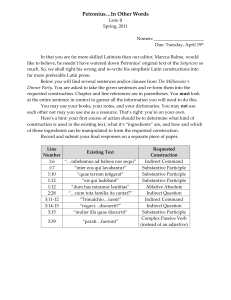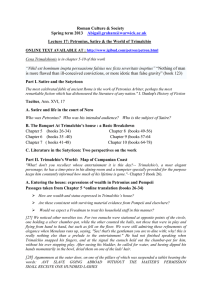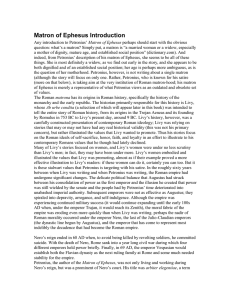Egalia - CLAS Users
advertisement
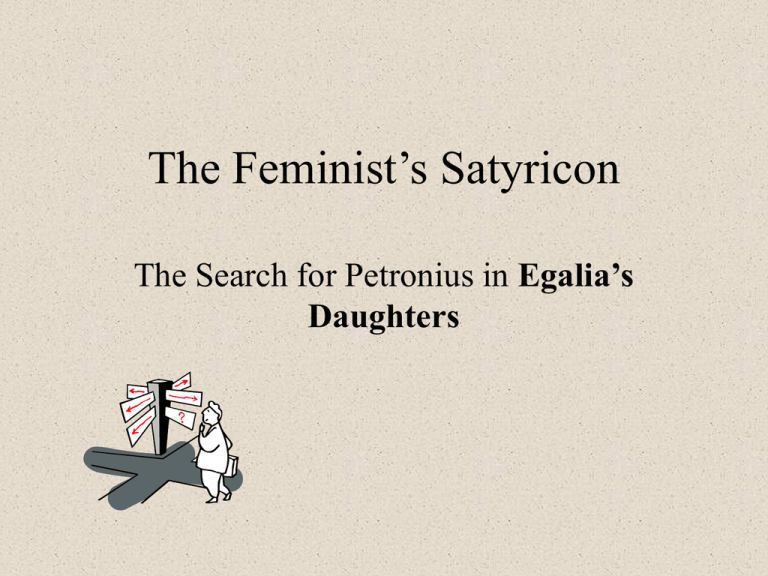
The Feminist’s Satyricon The Search for Petronius in Egalia’s Daughters Petronius • Gaius Petronius c.27-66 CE • Author of the satire, “The Satyricon” • Writes about status, style (as in dress) and describes ordinary people in his culture • Silenced by the Roman Empire: Forced to commit suicide by the emperor Nero • Petronius Bram • Author of a satire, “The Sons of Democracy” • Writes about status, style (as in dress) and describes ordinary people in his culture • Silenced by a gov’t official: His mother tells him to be quiet “And as always, Ruth Bram had the last word.” Petronius and the Symbols of the Upper Class • • We were nibbling at these splendid appetizers when suddenly the trumpets blared a fanfare and Trimalchio was carried in, propped up on some piles of miniature pillows in such a comic way that some of us couldn’t resist impolitely smiling. His head, cropped close in a recognizable slave cut, protruded from a cloak of blazing scarlet; his neck, heavily swathed already in bundles of clothing, was wrapped in a large napkin bounded by an incongruous senatorial purple stripe with little tassels dangling down here and there. On the little finger of his left hand he sported an immense gilt ring; the ring on the last joint of his fourth finger looked to be solid gold of the kind the lesser nobility wear, but was actually, I think, an imitation, pricked out with small steel stars. Nor does this exhaust the inventory of his trinkets. At least he rather ostentatiously bared his arm to show us a large gold bracelet and an ivory circlet with a shiny metal plate. (trans. William Arrowsmith) The Millionaire’s Dinner Party • Trimalchio’s house has wall paintings which depict his life story along with scenes from Greek myth. An elite audience sees a lack of good taste • Trimalchio’s appearance is half senatorial (holds a purple-bordered napkin) and half equestrian (fake gold rings) but he is really a freedman • Status and appearance are extremely important in this culture. This story is based on the real excesses of the Roman elite, but Trimalchio takes the excess to fantastic extremes. What happens at the end? • Trimalchio brings out his shroud • Encolpius is nauseated • Is he sick because of all of the rich food or due to other excess? Language in Egalia’s Daughters • mafele = male fele = female • manwim = man (plural: menwim) • wom = woman (plural: wim) • testerical = hysterical • Womfred Womm = a singer of popular songs Egalia’s Daughters • Egalia’s Daughters • While the concept of creates a society where gender is modern, in men are forced to wear the Roman world, restrictive, uncomfortable clothing, gesture and clothing, are expected to behavior (all be content to be associated with “housebounds” and are encouraged to be gentle, modern gender not strong. Again, the concepts), determine excessive behaviors of a power and status in the culture are taken to Roman World. extremes. Life in Egalia • “That’s exactly the way that all signs of ancient patriarchy are explained away by the experts. . . the ancient sculptures represent fele figures even though any child can see it is a manwom’s body and without any basis except the assumption that all cultures are necessarily dominated by wim .” (p.156). The Appearance of Ruth Bram • The attire of the ruling class, as modeled by Petronius’ mother, Ruth Bram: • “Mum was a handsome wom. She had a fine rounded head and shortcropped hair that always stood straight up. A straight nose, sharply defined features, small piercing pale blue eyes, a thin determined mouth, straight shoulders and distinctive movements. When she moved, she always did so purposefully and efficiently. Her voice, which was sharp and penetrating, always gave the impression that she knew what she was talking about, even when she didn’t. That was how a wom ought to be. Besides, she was always stylishly dressed. A loose brown tunic and baggy trousers. Brown shoes with thick soles. She usually wore a white silk scarf around her neck. She always looked neat. An attractive wom, such as menwin dream of. Petronius knew that.” Petronius’ clothing • “He [Petronius] was red-cheeked and sweating. He glanced quickly towards his armpits to see whether it showed. The turquoise blouse had unmistakeably begun to take on a darker colour. He sweated even more. The blouse clung; he could feel the material against his ribs. . . . He fixed a wad of cotton-wool in each armpit and hurried back up. His tight shoes were rubbing. Then he realized he had forgotten the little luminous handbag, a special one for the ball, which had to be fastened to the gold cord, and he had to run back down again.” Food for Thought • What is the difference between “Culture” and “culture”? Who maintains the boundaries between the two concepts? How and why are they maintained? Or are they? • What are the values of the elite? • What are the social norms? Next Week • How does Petronius rebel? • Who is horrified by his rebellion? • Why does Brantenberg describe the men as “laughing in liberated defiance”?
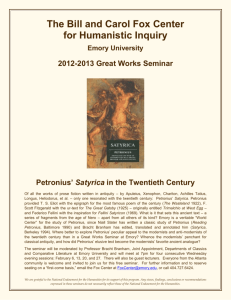
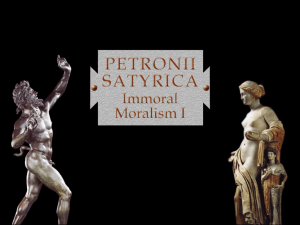
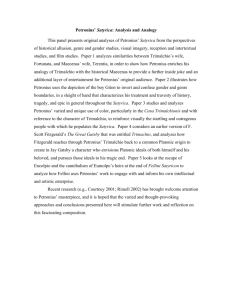
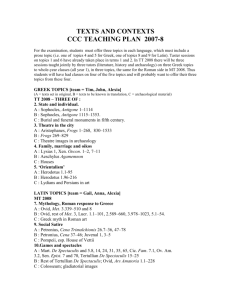
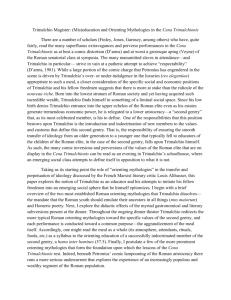
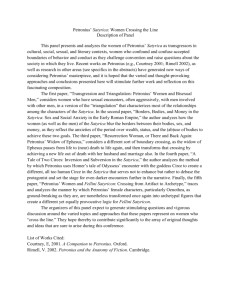
![l. Introductory (Elite & Popular Culture) a] Ancient Greek and Roman](http://s3.studylib.net/store/data/008887829_1-41a4aa72c3bf663a66d9d2f2890c838a-300x300.png)

